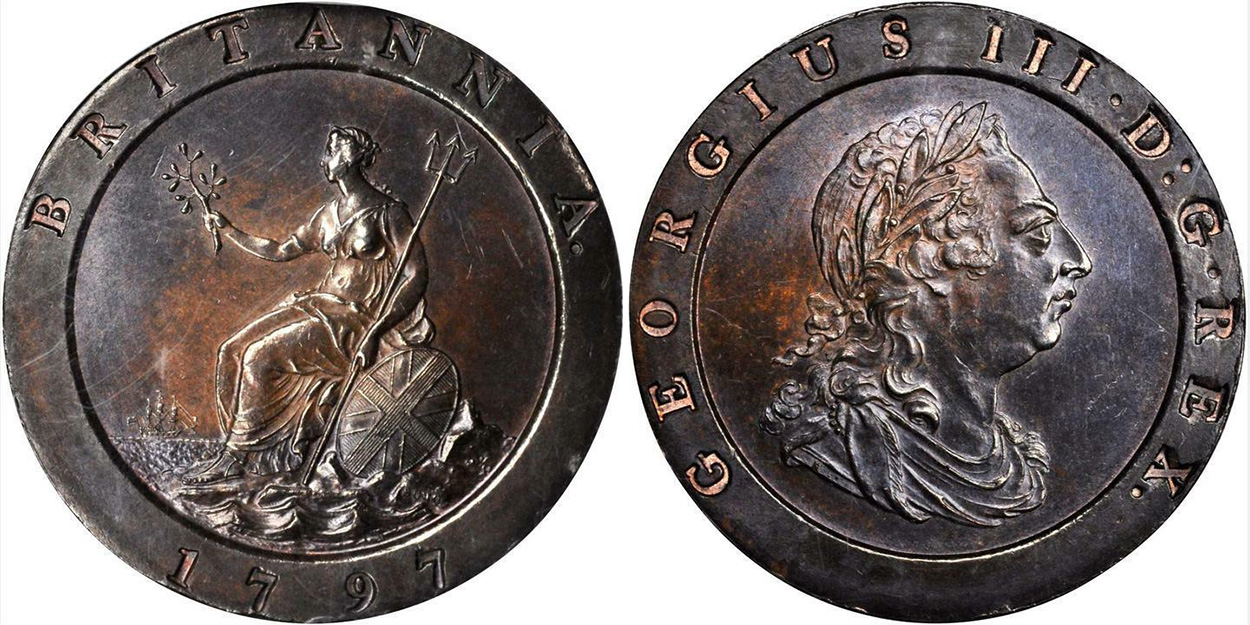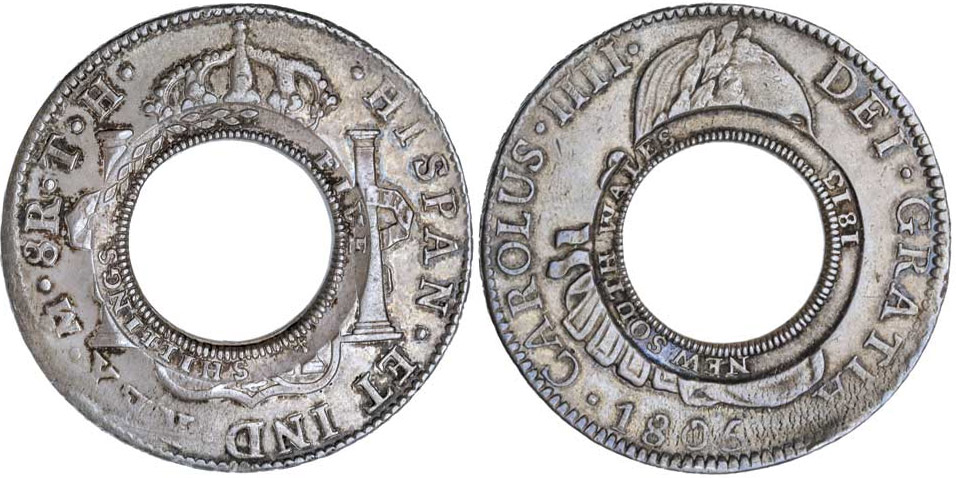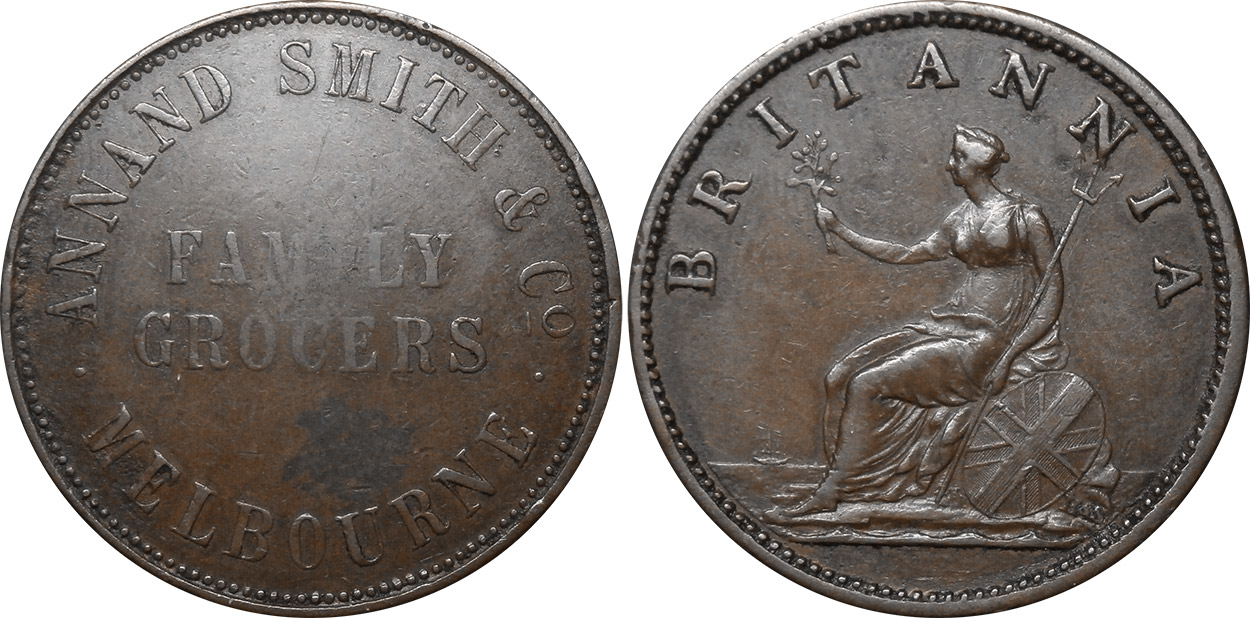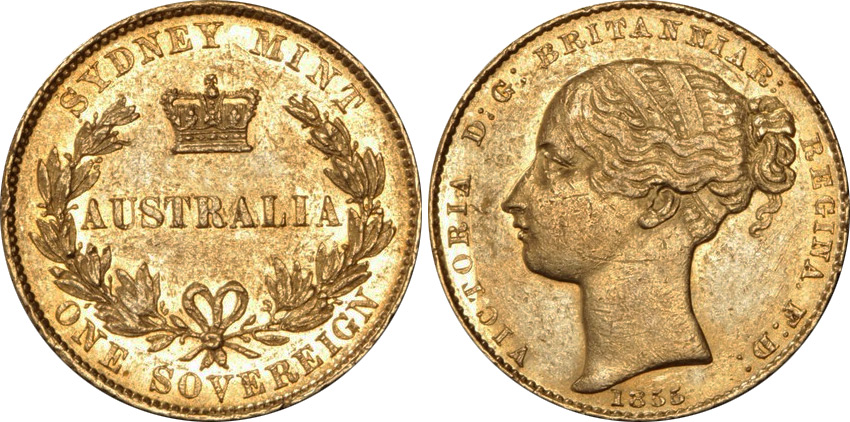Nineteenth century Australian coinage
By John Roberts-Lewis | Tuesday, 8 July 1997
At the start of the 19th century there was no country of Australia, nor were there Australian coins. The first colonists and convicts landed in 1788 in New South Wales, the coast of which had been charted by Captain Cook in 1770. By 1800 the population had grown to 6000. Coinage consisted of anything brought by settlers or traders, but the bulk of transactions involved store receipts, private notes and barter.
In 1800 Governor King issued a Proclamation regulating certain coin values, shortly after the arrival of four tons of Boulton's 1797 'cartwheel' pennies.
These were tariffed at twopence and examples were also shown of English and East India Company gold and silver as well as a typical Spanish dollar. Portuguese and Dutch gold and silver completed the total of eleven coin denominations. The Proclamation's sterling values were received from the British Treasury and were those largely used in the colonies, in an effort to keep coin within the territory. Also, in 1800, boxes of 1799 halfpennies and farthings arrived after the Proclamation and must have been tariffed at double their face value as well, although we have no evidence of this.
Promissory notes, payable in wheat, and a soldier's pay note signed by the Paymaster of the New South Wales Corps were shown as representative of the wide range of types of note in circulation. Rum, wheat and meat were used by obtaining Government store receipts or in barter. Licences for retailing spirits were held by the NCOs of the New South Wales Corps which had been raised in 1790 to guard the convicts.
The use of rum as a 'currency' was widespread, the authorities even offering 30 gallons of it for the recapture of two criminals. High profits led to a corrupt system involving most of the colonists, which the next Governor, Captain Bligh, tried to reform. He suffered his second mutiny, being arrested. In 1809 Governor Macquarie arrived and the 73rd Regiment of Foot replaced the New South Wales Corps, which was sent to Europe, and its commanding officer was cashiered.
The first Australian coins were produced in 1813 using a delivery of 40,000 Spanish dollars. Their centres were punched out and stamped as 'Fifteen Pence' (quarter dollars), whilst t he rest of the dollar was stamped around the inner hole with 'Five Shillings'. The dies and work were done by William Henshall, a freed convict, who had originally been transported for forgery ! Being greatly over tariffed this silver remained in New South Wales, being reduced in value in 1825 and finally withdrawn in 1829.
Macquarie's decree for the coins banned paper money but continued in New South Wales and also in Van Dieman's Land (Tasmania), where a convict settlement had been started in 1803. Governor Brisbane attempted to adopt a dollar sterling standard between 1822 and 1825. The Home Government, however, instituted a standard sterling value in all colonies in 1825, thus bringing this to an end. The Tasmanian 1823 shilling token probably never reached the colony and few pieces have survived of what was intended to accompany and assist a business venture - this would have been the first token issue. British silver reached Australia in some quantity from time to time:
£83,000 between 1824 and 1829, and £166,000 from 1835 to 1836. There were further note issues in the 1840s, but small change continued to be in short supply.
The first tokens, undated, for which we have documentary evidence were issued in 1849 for Annand, Smith and Co. of Melbourne. Produced by Heaton and Sons of Birmingham, there were a number of other undated issues ascribed to them and to other English medallists. It is possible, though no evidence has been found, that some of these were also issued towards the end of the 1840s and in the first half of the 1850s. One of Heaton's issues was for James Campbell of Morpeth, NSW, and is known to have been issued in 1854 when two tons of pennies and halfpennies went into circulation. Also, when J.C. Thornthwaite produced the first dated tokens in Sydney in 1852 the colonial makers were said to be unable to compete with the long experience of English firms. It can be inferred that a number of undated issues were already circulating.
In 1851 gold was discovered near Bathurst, NSW, an event which accelerated the build-up of population and the evolution of the separate states. It also meant that in NSW and Victoria, both of which had further gold funds in the same year, there was a worsening of the shortage of small change as people arrived at the gold fields of Ballarat and Bendigo.
Gold dust was plentiful and selling for up to 35% below bullion value, bringing demands for the right to mint the metal. South Australia, anticipating British approval, passed an Act to permit melting and coining gold dust for twelve months to February 1853. At first ingots and then one pound coins were produced from over one and a half million pounds of gold received. Between 1851 and 1861 the discoveries produced £125 million worth of gold. The Royal Mint set up a branch in Sydney, beginning to produce sovereigns and half sovereigns in 1855. They used William Wyon's head of Queen Victoria with her hair held in a filet as used on the English gold.
The reverse has AUSTRALIA within a wreath and the value below; the same types were used in 1856. From 1857 to 1870 an obverse design by Leonard Wyon had the Queen's hair held in a wreath by waratah (an eastern Australian flower); the same reverse was used. Subsequently, minting at Sydney and Melbourne (which opened in 1872), produced English-type 'shield' or 'St George' sovereigns or half sovereigns, using the mintmark S or M. The coins which had the 'AUSTRALIA' reverses became legal tender in Britain by Royal
Proclamation on 3 February 1866.
Token activity continued with silver threepences made by Thornthwaite in 1854 for himself and James Campbell; however, only about £5 worth of each were made. A further silver issue by Hogarth and Ericksen was made in 1858, again not in any quantity. It appears that British silver was meeting the need down to this level of small change. In 1857 numerous dated tokens were issued in several of the States and also in New Zealand, whose population had increased from 2000 in 1840 to 60,000 in 1857. Further issues occurred each year to 1862. Two makers dominated the scene: at first it was W. J. Taylor of London and then Thomas Stokes of Melbourne, who bought the plant that Taylor had set up in Melbourne, including many dies. Stokes began to produce characteristically Australian design and was responsible in 1852 for the issues of 27 firms, all in Victoria, out of a total of 33 issues in that year. His success, however, coincided with the arrival of a plentiful supply of the new bronze Regal coins. Responding to the outcry against unwanted tokens the State of Victoria made them illegal in 1863. Other States followed suit: Queensland in 1865, New South Wales in 1868, Tasmania and Western Australia in 1874 and South Australia in 1875.
New Zealand does not seem to have had the same problems, since occasional issues occurred until 1881 and it was only in 1897 that tokens were made illegal.
Medallists are known for 80% of the 192 issuers, Stokes being the most prolific, followed by Taylor and Heaton and Sons. Currency requirements for Australia and New Zealand were then met to beyond the end of the century by English and Australian gold and English silver and bronze, together with local bank notes.







